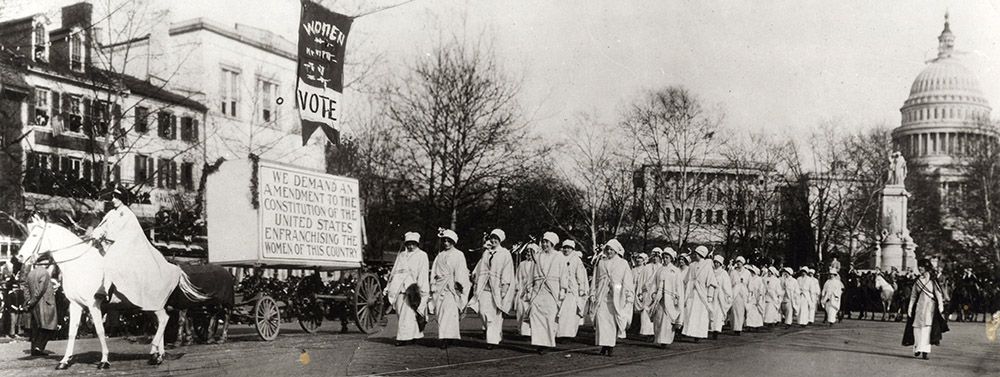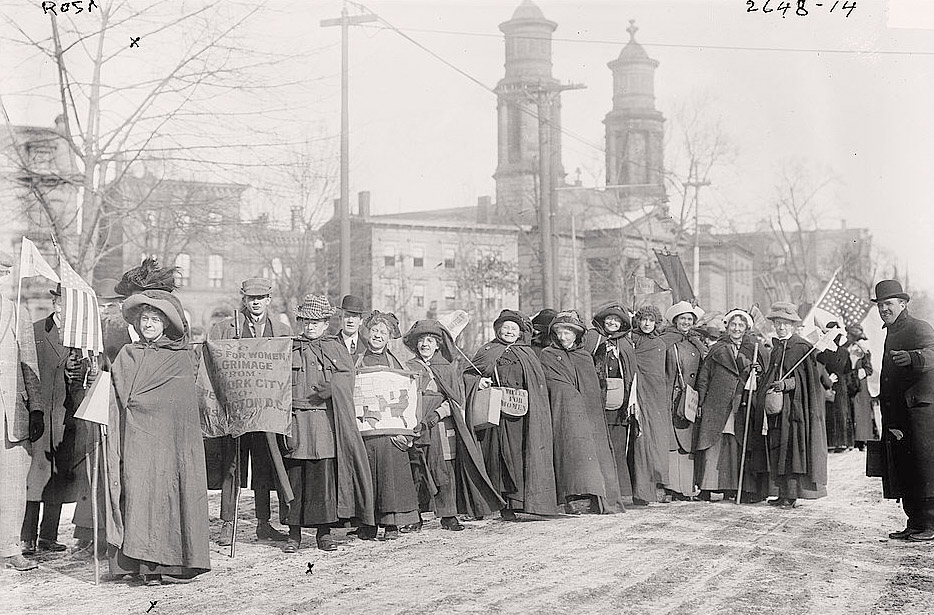 Women march in the National Woman Suffrage Parade in Washington D.C. in 1913. (Courtesy of National Archives)
Women march in the National Woman Suffrage Parade in Washington D.C. in 1913. (Courtesy of National Archives)
The first suffragist parade in Washington D.C. was organized by Alice Paul and Lucy Burns for the day before President Wilson’s inauguration in March 1913. Working with the National American Woman Suffrage Association, they drew thousands of marchers to rally for a national amendment on woman suffrage. Headed by Inez Milholland on a white horse, these marchers emphasized grace and femininity – a strategy Alice Paul promoted to rebuke the anti-suffragist claim that political engagement would corrupt American ideals of womanhood.

General Jones [left] and Suffrage Pilgrims arrive in Washington D.C. for National Woman Suffrage Parade in 1913, (Courtesy of Library of Congress)
Enlarge Image
General Jones [left] and Suffrage Pilgrims arrive in Washington D.C. for National Woman Suffrage Parade in 1913, (Courtesy of Library of Congress)
Enlarge Image The procession was the first in a three-part demonstration. Marchers, bands, and floats representing different states and professions made their way down Pennsylvania Avenue. At the same time, an allegorical tableau was performed in front of the treasury building which featured women playing the roles of Columbia, Liberty, Charity, Justice, Hope, and Peace. In the final act, demonstrators gathered to hear speeches from prominent suffragists including Anna Howard Shaw and Helen Keller.
Though the procession included both black and white marchers, they were racially segregated. Alice Paul, fearful of losing southern support, caved to their demands to keep African American women from marching with white state delegations. Black marchers were instead relegated to the back of the parade. Ida B. Wells refused to be separated from her Illinois delegation, and waited in the crowd to jump the barriers and march with the women representing Chicago.
The procession generated massive crowds that grew increasingly hostile and blocked whole streets, forcing marchers to push through with horses and automobiles. Suffragists were verbally abused and physically assaulted while the D.C. police did little to protect them. They were instead aided by concerned citizens, including a troupe of Boy Scouts, the Pennsylvania National Guard, and a U.S. cavalry escort. In all, the marchers and their detractors generated press and sympathy for the cause of woman suffrage.
Next:
Silent Sentinels Picket the White House >